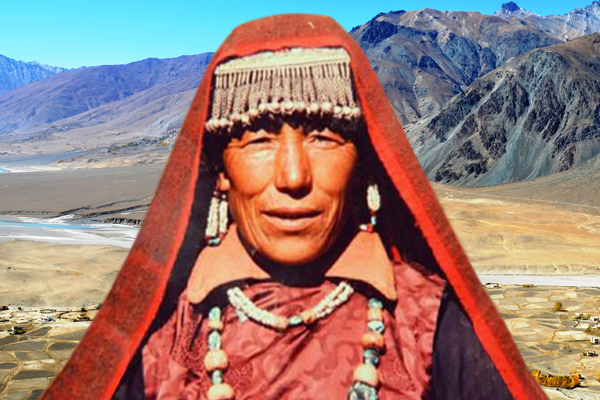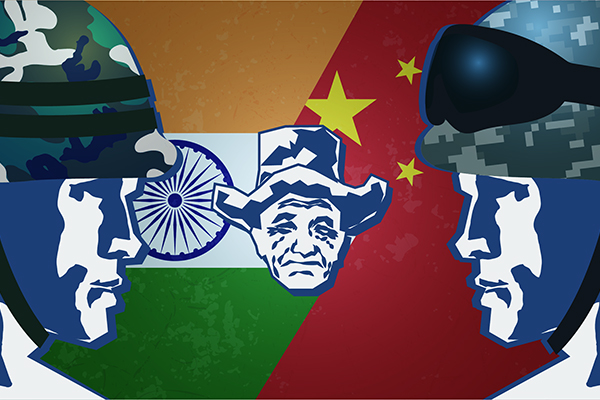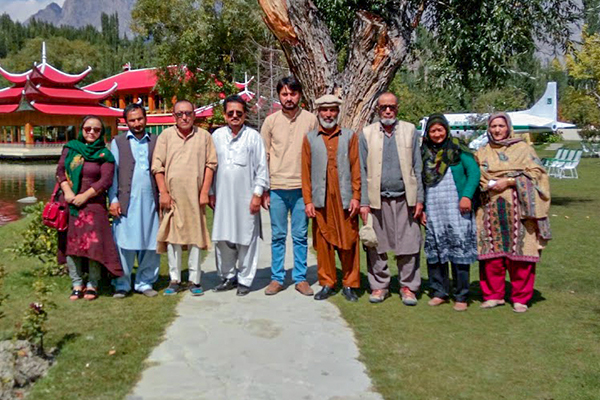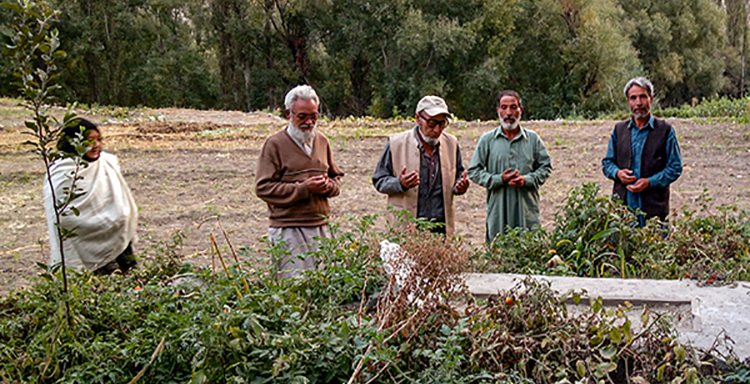Owing to its geo-strategic location, Ladakh has historically played an important role in ancient trade especially the Silk Route. It was the melting point of culture that connected the Indian subcontinent with Central Asia, China and Tibet. The presence of the two-humped Bactrian camels in Nubra valley is living evidence of these historical links. There was a special connection between Ladakh and Turkestan in Central Asia. I was reminded of this history recently as I watched the popular Turkish series called Ertugrul.
Ladakh was part of an important feeder route to the main Silk Route trader. It is thus not surprising that merchants from Central Asia who visited Ladakh had a significant influence on its social, cultural, and political spheres. There was an intermingling of culture, ideas and ideologies and in some ways, this link also became one of many gateways through which Islam reached the region. Traders from Turkestan married local women and settled in Ladakh and integrated within its social fabric and had a major impact on the socio-cultural life of Ladakh, especially its Muslim communities. Two major groups that are still present in Ladakh are the Dards and the Arghons. While the Dardic community traces its long history into the prehistorical era, the Arghons are of Turkic origins. All of this came to my mind as I watched Ertugrul, which is about the Turkic tribe called Kayi who invaded Constantinople, which was controlled by Orthodox Christians at the time and went on to found the Ottoman Empire.
While watching the serial, I kept thinking back to my own community in Zangskar. I saw many similarities between them and the Kayi. Perhaps a Turkic Muslim trader had somehow managed to reach Zangskar and decided to settle down in the valley. In Zangskar, the most common second name for a Muslim girl is Khatun. On a personal note, my maternal grandfather named me Zainab Khatun when I was born. As I was growing up, I somehow did not like the second half of my name as it seemed very old fashioned. I thus had it removed officially at some point and replaced it with Akhter. Now, I realise that my original name was a classic name and that my grandfather was perhaps ahead of his times.
In Ertugrul, I noticed that the second name of almost all the women was Hatun. For instance, the lead character is called Halima Hatun (The ‘K’ is silent in Persian). The word Hatun was used as an honorific for women during the Ottoman period.
I was also struck by the clothing of the people in the series, especially the womenfolk. The style, pattern, and especially the headgear is very similar to that of the Muslim community of Zangskar. In the past, this kind of headgear with a small round cap decorated with ornaments inside and a long flowing chador was worn by almost every grown-up woman. Nowadays, it is limited to marriages and to special occasions. Today, if you attend a Muslim marriage in Zangskar, it is customary for the bride’s friends to wear this traditional headgear. Some elderly ladies still wear a round cap below their long scarves or shawls, although these are general without ornaments. I looked through my personal archives and found the photograph used above. It is of my grandmother, the late Hajji Fiza Khatun. She is wearing a traditional Ladakhi Muslim dress with traditional jewellery and the unique head gear complete with flowing ornaments attached to it. This headgear is strikingly similar to those worn by the women in the Turkish series.
Another striking similarity that struck me is the sword dance performance during marriage processions. When Ertugrul marries Halima Hatun, the groom’s friends led by Turgut perform a sword dance to local music. In Zangskar too, the groom’s friends perform such a sword dance to on the sounds of traditional Ladakhi music. As far as I know, this sword dance is only performed by the Muslims of Padum during marriage ceremonies. While other communities in Ladakh and Baltistan do perform sword dances it is not a part of their marriage ceremony as it is in Padum.
Similarly, a number of Turkic words have become an integral part of Ladakhi language today, while many words in the two languages sound very similar. For instance, the Turkic word for snow, water and onion are Kar, Su and Tsoan, which is very similar to their Ladakhi equivalents of Kha, Chhu and Tsong. Even the wooden bowls and spoons used by the Kayi in the series is similar to items traditionally used in Ladakh. Many people still use a wooden container to churn curd and make butter even today and the wooden cylinder to churn butter tea.
It is said that wealthy Turkic traders, mostly Arghons, donated money and gifts to construct the first Mosque in Leh. The relatively new Central Asian Museum in Leh depicts these historical connections between Ladakh and Central Asia. Many of the carpets and other gifts donated by these traders are now housed in this museum. Many Turkic Arghon families of Ladakh are known to have donated antiques, artefacts, and manuscripts from their family to the museum.
More recently, the Galwan valley has been in the news as the site where India and China had a violent face-off in June 2020 with casualties on both sides. This valley was named after Ghulam Rasool Galwan, who was a Ladakhi adventurer with Turkic ancestry who assisted many European and British explorers in the 19th Century. The Galwans remain a prominent Muslim family in Ladakh even today.
It is fascinating how a TV series can ignite one’s imagination to explore one’s own heritage more closely. Though Dirilis Ertugrul was started in 2014, its popularity has spread across the Indian Subcontinent, especially amongst Muslim communities. It is now streaming online and is accessible to a much wider audience. I am watching this series and look forward to exploring more fascinating connections between Ladakh and its neighbouring regions.
By Dr. Zainab Akhter
Dr. Zainab Akhter works at the Manohar Parrikar Institute for Defense Studies and Analyses, New Delhi.




